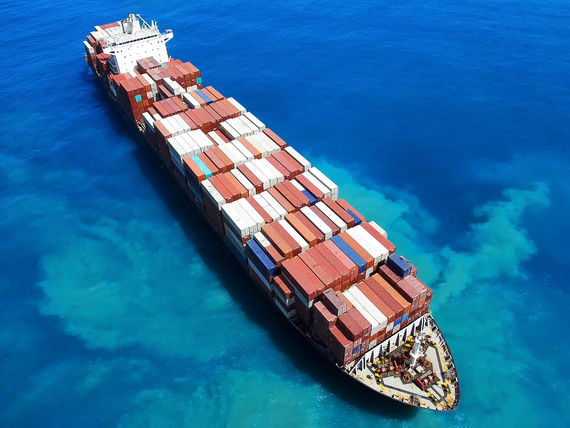What We're Reading: BDP Trendwatch Week 15

Ocean cargo industry is tough to forecast in wake of COVID-19, say analysts
The world is a very different place compared to when the last edition of Drewry’s Container Forecaster report was published in December. The only certainty is supply and demand volatility.
Analysts for Drewry’s “Container Forecaster” note that the outbreak of coronavirus (COVID-19) has laid bare the fragility of humankind and the supply chains that help us to live as we have become accustomed.
“Each passing day brings more grim new statistics that make it clear that our early assessment of the crisis and its likely impact on the container shipping market was too optimistic,” observes Drewry’s latest report.
Source: Supply Chain 24/7
US-China war of words over the coronavirus crisis may well reignite the trade war
The coronavirus pandemic is reshaping the way the world lives, works and trades. The US-China trade relationship in particular is being disrupted in three distinct but closely intertwined ways: one, trade dependencies are being rethought; two, prospects for re-escalation of trade tensions are mounting; and three, mutual trust is deteriorating.
Long before any of us heard the word “coronavirus”, a series of gradually escalating tariff rounds between the US and China beginning in 2018 created significant disruptions in what was then a roughly US$635 billion trade relationship.
Source: South China Morning Post
Wuhan on the move again as coronavirus lockdown limits ease
Trains, buses and planes have started moving tens of thousands of passengers from Wuhan as the central Chinese city, the initial epicentre of the coronavirus pandemic, emerges from an 11-week lockdown. From Wednesday, Wuhan’s 11 million residents can travel in and out of the city as long as they have a QR code to show that they are in good health and have not been in contact with people confirmed with COVID-19, the disease caused by the coronavirus.
Source: South China Morning Post
Idle containership fleet set to hit record high of three million teu
Idled containership capacity is expected to reach a record high of 3m teu within weeks, in the “worst capacity crisis the industry has ever seen”, according to new data from Alphaliner.
With over 250 sailings already withdrawn in the second quarter, the consultant forecasts that the lay-ups will push the idle fleet to a level twice that seen during the 2009 global financial crisis.
“No market segment will be spared, with capacity cuts announced across almost all key routes,” warned Alphaliner.
Source: The Loadstar
Feeling pandemic’s brunt, U.S.-bound port volumes see further declines, reports Port Tracker
With no clear end to the coronavirus, or COVID-19, pandemic in sight, the new edition of the Port Tracker report, which was issued today by the National Retail Federation (NRF) and maritime consultancy Hackett Associates, continues to point to declining inbound volumes for major United States-based retail container ports.
The ports surveyed in the report include: Los Angeles/Long Beach; Oakland; Tacoma; Seattle; Houston; New York/New Jersey; Hampton Roads; Charleston, and Savannah; Miami; Jacksonville; and Fort Lauderdale, Fla.-based Port Everglades.
Source: Supply Chain 24/7
US-to-Canada trucker crossings fall nearly 10% in a single week
The number of truck drivers crossing from the U.S. to Canada plunged last week in a sign of how COVID-19 continues to hit the freight markets in both countries.
The Canada Border Services Agency (CBSA) reported Tuesday that nearly 10% fewer truckers entered Canada from the United States from March 30-April 5 compared to the previous week. The 79,616 truck driver crossings represent a nearly 29% drop from a year earlier.
Source: Freight Waves
As China reopens, Africa’s woes threaten to starve its factories
On a typical workday, hundreds of thousands of men clad in overalls and carrying safety equipment and head lamps assemble at South Africa’s mine shafts. They crowd into cramped elevators to be lowered miles underground, where they hack at seams of gold or platinum and haul ore in intense heat and humidity. After hours of backbreaking labor, they return to the surface to shower in communal areas, and many share meals and bed down in crowded hostels.
These aren’t typical days.
Source: Bloomberg via Supply Chain Brain


